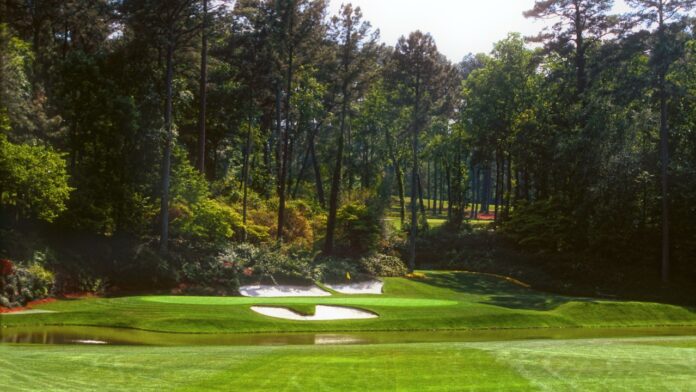
When you step onto a golf course, you feel more than just grass and holes; you feel a story.
That story is carefully planned by a golf course architect. These professionals shape not only how the course looks but how players experience every moment, from the first tee shot to the final putt.
By combining art, science, and strategy, architects turn a piece of land into a living playground for golfers of all skill levels. Their work affects almost everything: where you hit, how hard, whether you take a risky shot, and how much fun or frustration you have.
How Architects Use the Land to Create Strategy and Flow

Terrain Analysis and Routing
One of the most important jobs of a golf course architect is to study and work with the natural land. Instead of flattening everything out, good architects let hills, valleys, trees, and water shape how holes are laid out. This approach makes a course feel like it belongs in nature.
Before drawing a single line, architects analyze the land in detail. They consider water drainage, soil quality, wind patterns, and existing vegetation. These features help determine where to place tees, fairways, bunkers, and greens in a way that respects the land and makes the course interesting to play.
Routing is how the holes flow from one to the next. A well-planned route ensures that holes build on each other in challenge and beauty. Instead of putting all the long, hard holes first and then the easy ones, architects mix it up. This keeps golfers engaged and ensures every shot feels different.
Strategic Placement of Hazards
Hazards like bunkers or water are not just there to punish mistakes; they are placed thoughtfully to create decision-making opportunities. Players must choose: play it safe, or take a risk for a reward?
For example, a water hazard protecting the front of a green forces a player to decide whether to lay up or go for the pin. This risk-and-reward approach rewards smarter play and challenges experienced golfers.
Heroic vs. Strategic Design
Golf course design can follow different philosophies. In strategic design, hazards are placed to encourage thoughtful shot-making. In heroic design, hazards present a higher risk but greater rewards. Here, players can attempt bold shots over water or bunkers, or play it safe around them. Heroic design tests a golfer’s nerve and skill because the payoff for success is significant.

The Art of Green and Fairway Design
Fairway Design and Lines of Play
Fairways are not just straight paths. Architects shape them to be wide, narrow, or curved in different places. These contours define strategic lines: one route may be safer but longer, while another may be riskier but shorter.
Fairways are also designed to guide how players move through the hole. Gentle slopes or ridges can direct where a tee shot lands or how the ball rolls after landing. Architects think not just about the immediate shot but also the next one.
Green Complex Design
Greens are the most critical part of the course for scoring. Architects carefully design their shape, slope, and multiple possible pin placements. Many greens have substructures like ridges, mounds, or swales that create undulations, making putting more interesting.
The goal is to offer a variety of target spots, from easy to challenging, keeping the green engaging for all skill levels. Proper drainage is also incorporated, so the green remains playable even after rain.
Visual and Textural Elements
Beyond playability, architects aim to make greens and fairways visually appealing. Different grass textures, colors, and mowing patterns create beauty while also helping golfers judge distances and read breaks. Trees, shrubs, and landscaping features frame holes, enhance natural beauty, and provide shade or wind protection.
Environmental Stewardship and Sustainability
Working with Nature, Not Against It
Modern architects focus on working with existing natural features rather than reshaping land extensively. Preserving trees, hills, wetlands, and native vegetation helps courses feel authentic. When reshaping is necessary, it’s done carefully to maintain proper drainage and soil health.
Water Conservation
Water management is one of the biggest environmental challenges for golf courses. Architects use efficient irrigation systems, capture rainwater, and choose drought-resistant grass species. This reduces water use while keeping the course playable.
Habitat Preservation
Good course design includes creating habitats for wildlife. Edges, roughs, and natural zones allow native plants and animals to thrive, supporting local ecosystems and enhancing the course’s natural appearance.
Long-Term Maintenance
Architects consider how a course will be maintained for years to come. Thoughtful design reduces water usage, limits chemical needs, and ensures long-term sustainability, making life easier for course superintendents while protecting the environment.

Famous Architects and Design Philosophy
- Donald Ross: Designed around 400 courses or more, Ross emphasized natural terrain, minimal earth-moving, and strategic play. His signature features include crowned “turtleback” greens and subtle slopes that challenge putting without feeling artificial. He also aimed for clear routing to reduce unnecessary walking.
- Alister MacKenzie: Believed courses should be beautiful, strategic, and playable for golfers of all abilities. He emphasized natural terrain, variety of holes, and thoughtful hazards. MacKenzie’s work remains highly respected for blending aesthetics with challenge.
- Seth Raynor: An engineer-turned-architect, Raynor designed about 85 courses, often using “template holes” inspired by classic European designs. He rarely played golf himself but was highly skilled at translating theory into strategic, playable holes.
- Tom Fazio: A modern American architect, Fazio is known for attention to detail, crafting visually stunning courses that are challenging but enjoyable for a wide range of players.
All of these architects shaped the player experience, designing courses that make golfers think, strategize, and enjoy the land.
Frequently Asked Questions
Q: Why does golf course design matter for me as a player?
A: Design determines difficulty, shot types, and overall enjoyment. A well-designed course challenges you while remaining fair.
Q: Can design make golf more environmentally friendly?
A: Yes. Architects can save water, protect wildlife, and reduce maintenance impact through smart design.
Q: Do architects place bunkers randomly?
A: No. Bunkers are placed strategically to influence shot selection and reward skillful play.
Q: What is “routing” in golf course architecture?
A: Routing is the arrangement of holes across the land, guiding players from one tee to the next green while respecting natural features.
Q: Are modern golf courses very different from older ones?
A: Some are. Modern designers use advanced technology and focus more on sustainability, though many classic strategic concepts remain in use.
Conclusion
- Golf course architects are artists, scientists, strategists, and environmental stewards.
- They shape courses to challenge players, reward skill, and create memorable experiences.
- Good routing, hazards, and green/fairway design influence strategy, fun, and difficulty.
- Modern architects also prioritize sustainability, water conservation, and habitat preservation.
- Whether you’re a beginner or a pro, a well-designed course shapes your entire round, making every shot meaningful.
Read More:
- Legendary Rivalries in PGA History
- The Most Beautiful Golf Courses Around the World
- Greatest Super Bowl Moments That Shaped Football History
This article was made with AI assistance and human editing.



